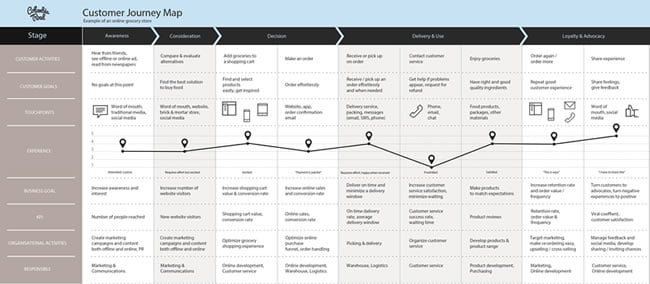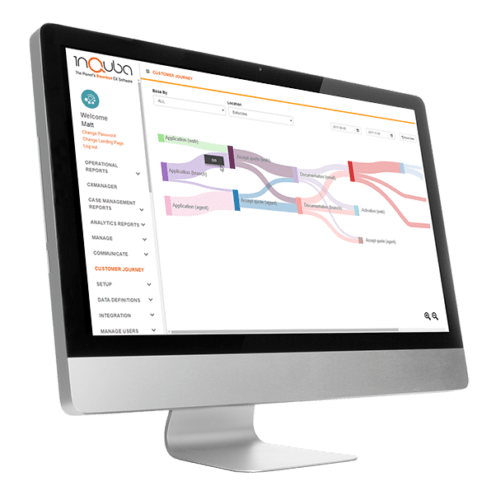How leading businesses are turning from the customer journey map to the customer

 Imagine deciding upon a much-needed family holiday to the beach and asking a travel agent friend to arrange every aspect of it. The perfect getaway, without the admin. Your first surprise is when your shuttle delivers you to the train station rather than the airport. The route is slow and winding, and all the small towns are historically significant, apparently, but feel like an interruption. Dinner is a seafood paella that’s scaring the children and some of the adults. Your compartment is cramped and short one bed. Hope rises as you reach your destination a day later, but you’re whisked to a backpackers with shared facilities. You still haven’t seen the ocean, and now the kids are crying… A quick call to your agent friend reveals that “this is what holiday makers want.”
Imagine deciding upon a much-needed family holiday to the beach and asking a travel agent friend to arrange every aspect of it. The perfect getaway, without the admin. Your first surprise is when your shuttle delivers you to the train station rather than the airport. The route is slow and winding, and all the small towns are historically significant, apparently, but feel like an interruption. Dinner is a seafood paella that’s scaring the children and some of the adults. Your compartment is cramped and short one bed. Hope rises as you reach your destination a day later, but you’re whisked to a backpackers with shared facilities. You still haven’t seen the ocean, and now the kids are crying… A quick call to your agent friend reveals that “this is what holiday makers want.”
You wouldn’t knowingly accept a one-size-fits-all trip like this, so why do we think that our customers would? The truth is that they don’t. Unfortunately, customer journey mapping makes similar assumptions.
Customer journey mapping is often the first important step a business takes when it wants to improve the customer experience. The business (typically managers and consultants) models the processes and steps that they expect their customers to take. Lines are drawn and stickies are stuck. The more detailed variants include available touchpoints, responsible departments, and even an indicator of customers’ emotional state at each step: happy faces for successful applications, sad faces for account queries. And then the output is immortalized as boardroom art.
It’s an important and noble pursuit, and the outcome is a good starting point for understanding and improving the customer experience. But the key to identifying the shortcomings of the process is recognizing the absence of the customer (plural) in the room. Having identified that gap, here are the four ways your journey maps are failing you.

Source: www.columbiaroadcom.medium.com/
1/ MAPS AREN’T REAL JOURNEYS
Spoiler alert: the journeys we map don’t match what customers are experiencing in the real world. They’re an internal process view and are often conceptual at best. Our maps don’t accommodate for inefficient processes that create friction and influence behaviour, like when customer segments have to call the contact centre 5 times to achieve something. This would look like a recursive loop rather than a straight stripe.
Also, maps are isolated and don’t consider the connectedness of different journeys. Consider potential home buyers, mid-financing journey, who then jump into another journey to check insurance affordability. Separate, yet connected.
2/ MAPS DON’T CHANGE, BUT JOURNEYS DO
There’s no refresh button. Once committed, your journey map won’t update to reflect customer segments’ changing behaviour. This is a real factor in recent times, as we now value different things like simplicity and risk-aversion more than ever. This has resulted in customers becoming more empowered and digital, forcing businesses to invest in online channels and support customers’ cross-channel, unexpected behavior.
3/ MAPS DON’T KNOW INDIVIDUALS
Customers are real people with individual constraints, context and goals. This results in unique behavior at an individual level. In a world demanding personalized care and understanding, aggregates are no longer useful. Customer journeys are unique and unpredictable, and customers do unexpected things without warning.
How does an individual feel at a point in time? What are they expecting? Your map won’t give you this insight at a level that is helpful. You also won’t have a means to discover whether customers believe they’re receiving value at any point. The variations at an individual level need to be known and understood if they are to be addressed and customer experience improved.
4/ MAPS DON’T IDENTIFY OR ADDRESS OBSTACLES
Your customers are going to experience friction on their journey. It may be an inefficient channel, or confusing documentation. They may get distracted and lose momentum, or simply need a little more information. These factors differ across individuals and touchpoints, and change over time. Few of these can be anticipated but they all need to be identified and addressed if we are to improve customer experiences. In terms of anticipating, identifying and fixing, your journey map is a blunt instrument.
BEYOND JOURNEY MAPS

In contrast, Customer Journey Management is an ongoing practice rather than a discrete project, and offers a proven solution to customer experience and profitability for the customer-centric business. According to CustomerThink, “Journey management enables you not only to measure, monitor and optimize customer experience, but align your entire organization with your customers’ goals.”1
At inQuba we’ve seen a doubling of customer conversion and an improvement in customer experience through journey management methods. Customer Journey Management empowers today’s businesses with approaches and tools to achieve the following:
DISCOVER REAL CUSTOMER JOURNEYS
Rather than what you’ve modeled for your customers, use a real-time visualization of their real journeys to discover their actual experiences. Answer some common questions: Where are our customers leaving? Which customers are leaving, and which ones are reaching their goals? Which channels are most efficient? Where are the obstacles and friction points?
MEASURE ACTUAL VALUE DELIVERY
Do you understand the extent to which your customers perceive value as having been delivered? Reach out dynamically to measure sentiment and collect feedback at all points of your customers’ journey. This will build a real-time emotional layer for the real customer journey.
UNDERSTAND GOAL SUCCESS, AND FAILURE
Having discovered real journeys and customer sentiment at each step, you can now determine whether goals are being achieved or not. Are applicants dropping off due to poor value delivery, or are they merely losing momentum? Are customers terminating due to brand, or is there a channel failure. Deep insight is essential when designing corrective interventions.
DESIGN INTERVENTION STRATEGIES
Use a tool-box of approaches that move customers forward when they get stuck. Personalized digital nudges and value communications should be contextual and personalized and driven by a single view of every customer.
REVIEW AND OPTIMIZE
Unlike with the maps on the wall, effectiveness of interventions can be measured and updates made dynamically. Did our interventions reduce customer drop off? How has the customer experience improved? Have we seen a boost in customer conversion at key points, and how do we improve it further? Insight into effectiveness is essential when further optimizing for CX ROI.



